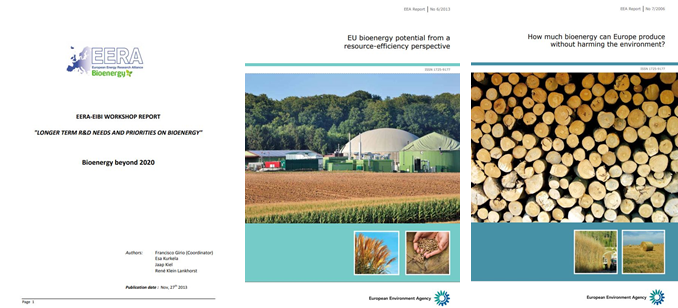17 Nov 2013
Three key reports on bioenergy in the EU: priorities in R & D, potential and viability of use
Bioenergy is the energy produced from the conversion of biomass, where it can be used directly as fuel or converted into liquids and / or gases. Below are three key reports on bioenergy in the EU that address priorities in R & D, the potential in the use of resources for their development and the feasibility of use without presuming damage to the environment:

- EERA-EIBI Workshop Report “Longer Term R&D Needs and Priorities On Bioenergy” Bioenergy Beyond 2020 (2013). This report was prepared in collaboration between the European Industrial Bioenergy Initiative (EIBI) and the European Energy Research Alliance (EERA) – Bioenergy. The report benefitted from the active
contribution of the participants in the workshop “Longer term R&D needs and priorities on Bioenergy”,
held in Brussels on 7th and 8th May 2013
- EU bioenergy potential from a resource efficiency perspective (European Environment Agency-EEA) (2013). The main objective of this report is to review the implications of resource efficiency principles for developing EU bioenergy production. The results presented are primarily based on the 2013 ETC/SIA study, capturing key messages while excluding some of the more technical elements. The report aims to be a more accessible version of the ETC/SIA study, aimed at the non-technical reader.
- How much bioenergy can Europe produce without harming the environment? (European Environment Agency-EEA) (2006). The purpose of this report is to assess how much biomass could technically be available for energy production without increasing pressures on the environment. As such, it develops a number of environmental criteria for bioenergy production, which are then used as assumptions for modelling the primary potential. These criteria were developed on a European scale. Complementary assessments at more regional and local scale are recommended as a follow-up of this work.
